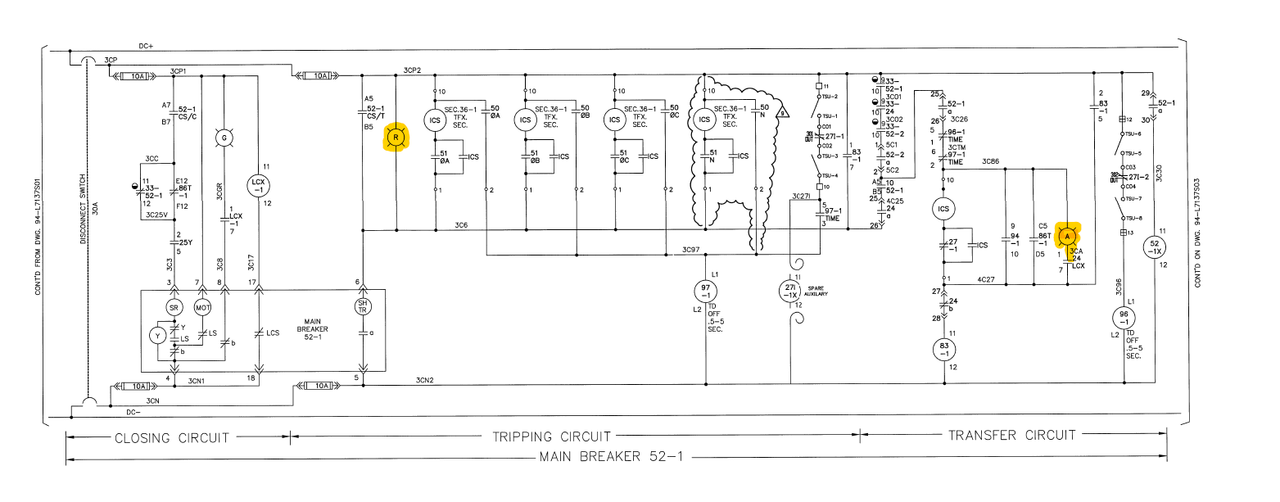Associate Engineer
Member
- Location
- California
- Occupation
- Electrical Engineer
An electrician was replacing indicator lamps for Breaker Status, Auto Transfer Ready, 86T Healthy lights on a (480V Main – Tie – Main) Switchgear lineup. When he was installing the Auto Transfer Ready light on Bus 2, the Main 2 Breaker opened, It appears that we have installed the incorrect lamps and somehow managed to energize the trip coil on the main breakers. I have attached the control schemtic.
How to calculate the correct lamp resistance ?
And how installing wrong lamp energized the trip coils?
Thank everyone!

How to calculate the correct lamp resistance ?
And how installing wrong lamp energized the trip coils?
Thank everyone!

